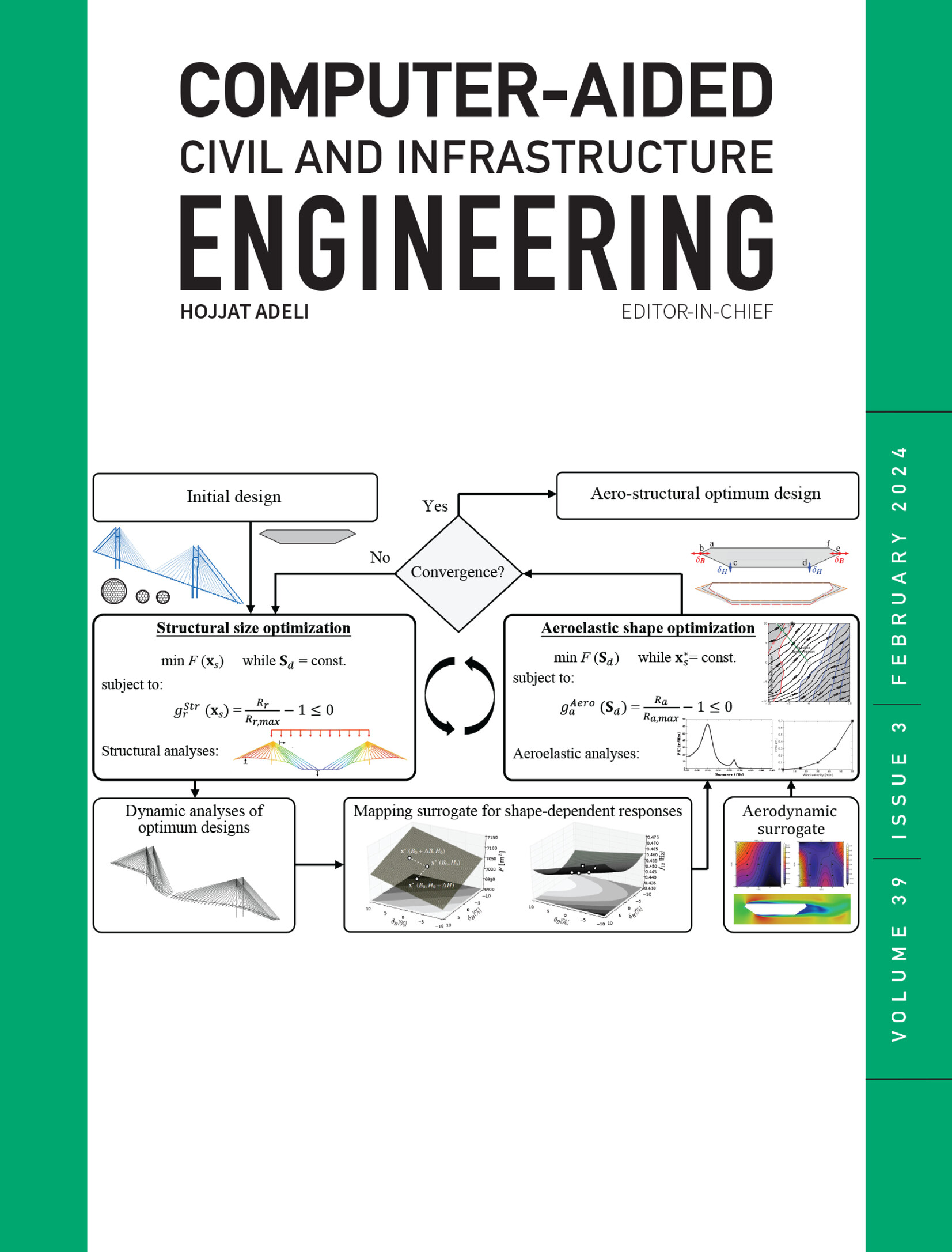Design of masonry structures using conditional generative adversarial networks fused with property text information
IF 9.1
1区 工程技术
Q1 COMPUTER SCIENCE, INTERDISCIPLINARY APPLICATIONS
引用次数: 0
Abstract
The preliminary design process for masonry structures requires engineers to iteratively verify code compliance and manually develop structural layouts. While image‐to‐image translation models can automate layout synthesis, existing approaches fall short in incorporating material properties (e.g., compressive strength, rebar yield stress) as explicit design constraints—a critical limitation for structural engineering applications. This study addresses this gap by proposing three fusion architectures that integrate architectural layouts with material property constraints: Direct‐GAN (early channel concatenation), Dense Fuse‐GAN (bottleneck dense embedding), and Multiscale‐GAN (multi‐scale skip connection fusion). All models were trained on paired architectural‐structural layout datasets and evaluated using perceptual quality metrics (e.g., peak signal‐to‐noise ratio, structural similarity index measure) and distribution‐based measures (e.g., Fréchet inception distance, mean squared error). We report that the Direct‐GAN architecture demonstrates superior performance across pixel‐level reconstruction accuracy and, hence, can establish an efficient framework for property‐aware, data‐driven masonry design that advances automation in preliminary structural design workflows.融合属性文本信息的条件生成对抗网络的砌体结构设计
砌体结构的初步设计过程需要工程师反复验证代码的符合性并手动开发结构布局。虽然图像到图像的转换模型可以自动合成布局,但现有的方法在将材料特性(例如抗压强度、钢筋屈服应力)作为明确的设计约束方面存在不足,这是结构工程应用的一个关键限制。本研究通过提出三种融合架构来解决这一差距,这三种融合架构将建筑布局与材料属性约束相结合:Direct - GAN(早期通道连接),Dense Fuse - GAN(瓶颈密集嵌入)和Multiscale - GAN(多尺度跳过连接融合)。所有模型都在成对的建筑-结构布局数据集上进行训练,并使用感知质量指标(例如,峰值信噪比、结构相似性指数度量)和基于分布的度量(例如,fr起始距离、均方误差)进行评估。我们报告说,Direct - GAN架构在像素级重建精度上表现出卓越的性能,因此,可以为属性感知、数据驱动的砌体设计建立一个有效的框架,从而推进初步结构设计工作流程的自动化。
本文章由计算机程序翻译,如有差异,请以英文原文为准。
求助全文
约1分钟内获得全文
求助全文
来源期刊
CiteScore
17.60
自引率
19.80%
发文量
146
审稿时长
1 months
期刊介绍:
Computer-Aided Civil and Infrastructure Engineering stands as a scholarly, peer-reviewed archival journal, serving as a vital link between advancements in computer technology and civil and infrastructure engineering. The journal serves as a distinctive platform for the publication of original articles, spotlighting novel computational techniques and inventive applications of computers. Specifically, it concentrates on recent progress in computer and information technologies, fostering the development and application of emerging computing paradigms.
Encompassing a broad scope, the journal addresses bridge, construction, environmental, highway, geotechnical, structural, transportation, and water resources engineering. It extends its reach to the management of infrastructure systems, covering domains such as highways, bridges, pavements, airports, and utilities. The journal delves into areas like artificial intelligence, cognitive modeling, concurrent engineering, database management, distributed computing, evolutionary computing, fuzzy logic, genetic algorithms, geometric modeling, internet-based technologies, knowledge discovery and engineering, machine learning, mobile computing, multimedia technologies, networking, neural network computing, optimization and search, parallel processing, robotics, smart structures, software engineering, virtual reality, and visualization techniques.

 求助内容:
求助内容: 应助结果提醒方式:
应助结果提醒方式:


